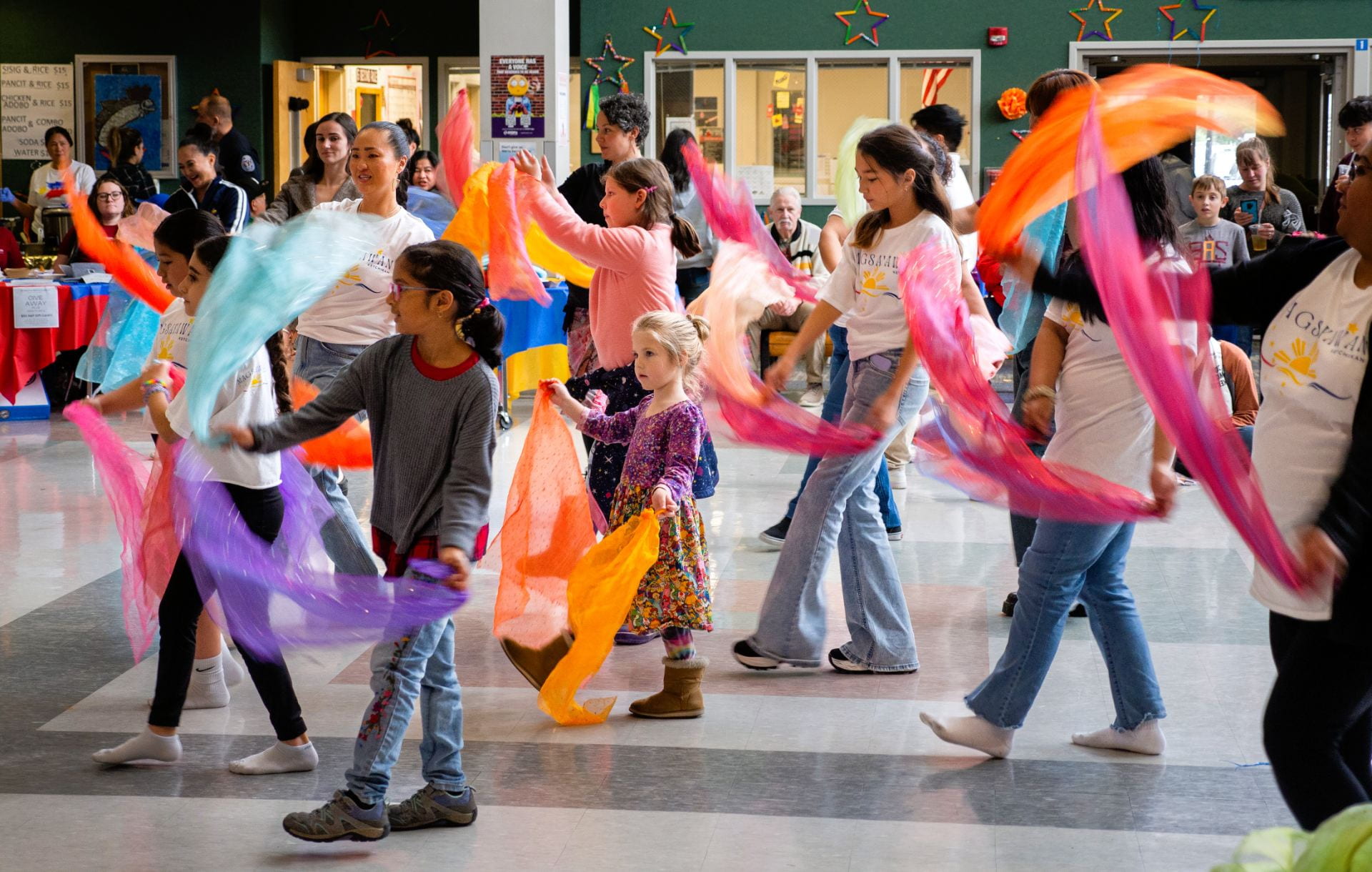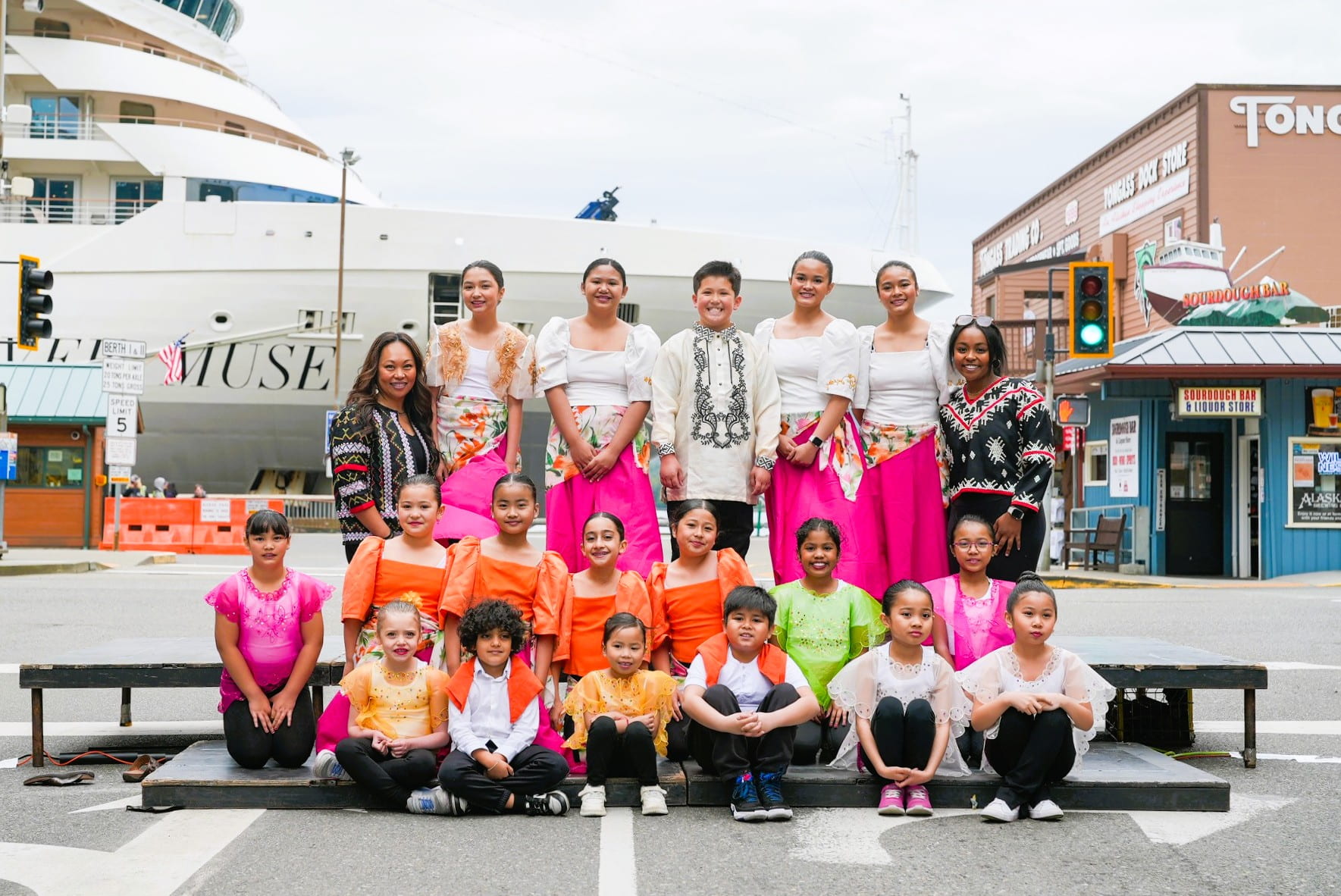‘Teach, Nourish, Heal, and Connect: Transforming and Revitalizing Filipino Identity in Alaska’ by Alma Manabat Parker
- Our Alaskan Schools Blog
- Nov 15, 2024
- 3 min read

“It was the perfect fusion of movement, identity, language revitalization, play, and the arts – this work is transformative.” – Rachel Lucy
This statement was written in a letter of nomination for the Governor’s Arts & Humanities Awards 2024. It was submitted by my colleague who was able to witness me during a cultural enrichment session at one of Ketchikan’s elementary schools. My work as the Health Equity Director with the Ketchikan Wellness Coalition has allowed me to incorporate culture in our outreach efforts to improve overall health and wellness for the Filipino community; we feel culture is medicine.
The children’s book I was reading to the students described the traditional Filipino folk dance Tinikling. It included a reference comparing the popular dance to the Filipina grandma having to “jump” between life like it was in the Philippines to life as it is in the US. As an immigrant born in the Philippines and raised in the United States, I could easily relate to the concept of maneuvering between two cultures. I pushed aside my Filipino cultural heritage to feel acceptance from the dominant society; from refusing to speak Tagalog in public to agonizing over my ethnic features, I did not want my identity to be based solely on being Filipino. I often kept my “Filipinoness” within the confines of our home. The home was the space we ate the delicacies of our homeland, we spoke freely the dialect of our region, and we gathered and celebrated with other Filipinos to feel the sense of connection with one another. It is very similar to the bird hopping through the bamboo tinikling sticks; I was drifting back and forth between the two identities that shaped my upbringing.

Now I am maneuvering between revitalizing cultural folk dance and music, cultural enrichment classes, multicultural community wide celebrations, and language access and equity. Rather than keeping culture within the confines of my home, I am now uplifting our heritage throughout Ketchikan to teach, nourish, heal, and connect us to one another; it is our medicine.
The cultural enrichment classes were part of the preparation and cultural sharing prior to October’s Filipino American History Month. We started in the summer of 2023 at our local parks and recreation youth summer camp and then moved to going to the elementary schools throughout the district. The sessions include learning Tagalog greetings, numbers, and colors, reading Filipino children’s stories, learning traditional dances and drumming, playing Filipino recess games, and of course tasting some of the Philippines famous snacks and treats.

The students embraced the opportunity to learn something new about our culture and always requested we come back to teach more. Teachers and administrators encouraged us to have designated learning units on a more regular basis throughout the school year. We noticed that fellow Filipino students were proud to see and hear their cultural identity being recognized and celebrated. “I’m Filipino Too!!” was a common response when we introduced ourselves. You could feel the immediate connection our Filipino students felt when they saw us. After our visits, we were often told by teachers that “my Filipino student is raising their hand more, making new friends, and taking part in discussions”. The sessions are impactful in different capacities and getting that feedback makes it worthwhile. These opportunities were missing in schools during my elementary years and is something that would have strengthened my connections to cultural identity much sooner.

These cultural enrichment classes are made possible through Ketchikan Wellness Coalition Strengthening Cultural Unity Task Force. Funding received through the generosity of Alaska State Council on the Arts, The Alaska Foundation, National Folklife Network, Alaska Humanities Forum, Rasmuson Foundation, and the Robert Wood Johnson Foundation contribute to ensuring our youth have a safe, inclusive, and diverse learning environment that fosters a stronger sense of belonging. We are committed to collaborating with our cultural allies to ensure that we recognize and celebrate the various ethnicities within the schools. We value learning about what makes each culture unique as well as discovering the similarities that make us feel more connected rather than different to one another.
As leaders in education, you have the power to translate this new awareness of the experience of our students into action. You can participate and celebrate important cultural dates and heritage months, actively support language access and equity through ELL advocacy, develop opportunities that support teachers to infuse culture in their learning environments, and empower students to take pride in their cultural identity.

I am overjoyed knowing that this passion project creates opportunities to transform and revitalize our once “invisible” yet vibrant culture. We hope educators understand the impact of student’s development when their cultural identities are incorporated into their learning. We desire that students and families feel seen and heard; and just like the Tinikling, we will keep dancing and maneuvering through the journey until that happens.




Comments